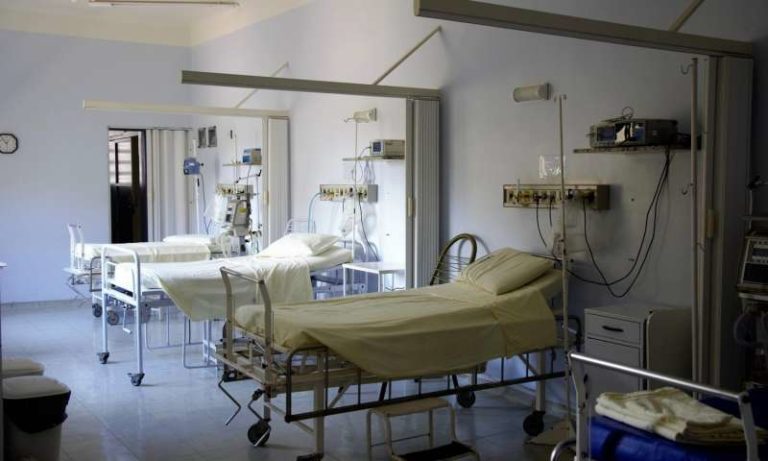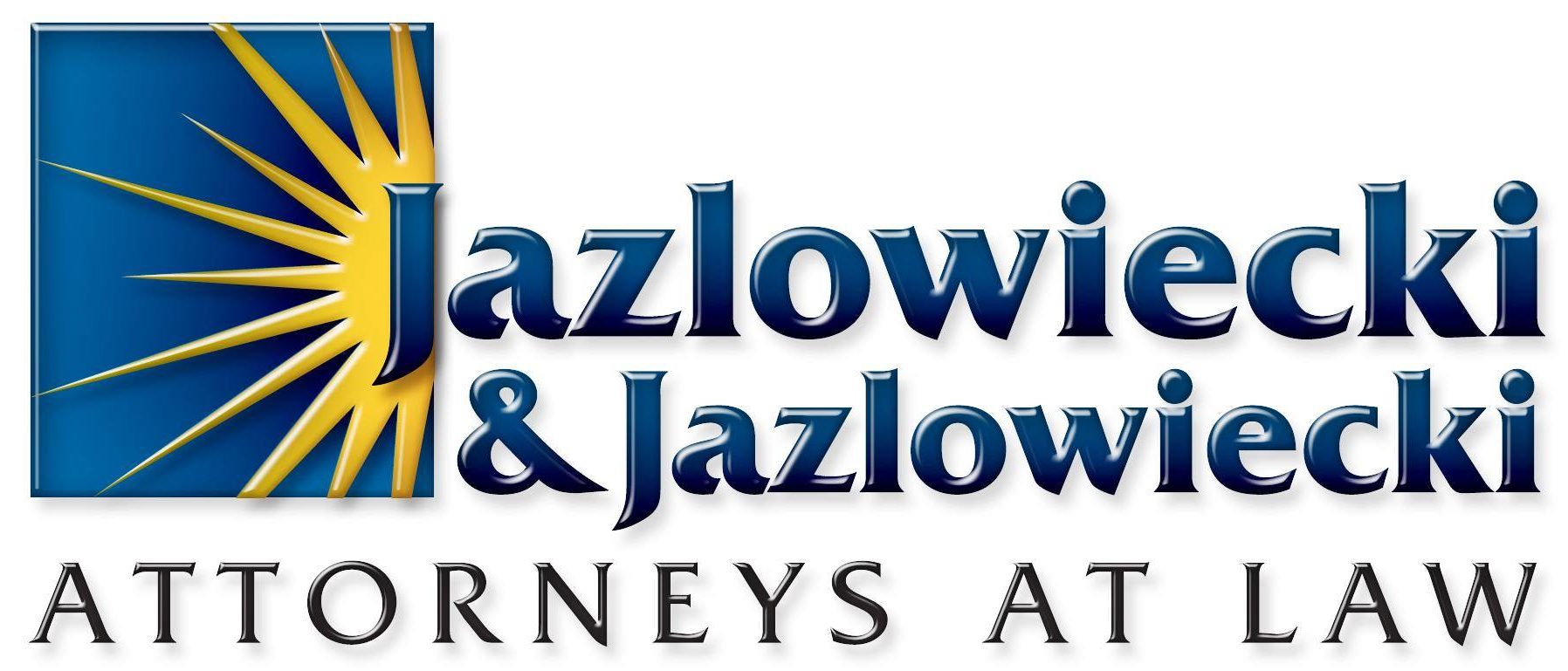Connecticut Medical Malpractice Lawyers

If you or a loved one suffered (or passed away) from injuries caused by a medical malpractice in Connecticut the experienced medical malpractice lawyers at Jazlowiecki & Jazlowiecki Law will aggressively pursue your case to get you the highest possible settlement.
Analyzing medical death rate data over an eight-year period, Johns Hopkins patient safety experts have calculated that more than 250,000 deaths per year are due to medical error in the U.S. Their figure, published May 3 in The BMJ, surpasses the U.S. Centers for Disease Control and Prevention’s (CDC’s) third leading cause of death — respiratory disease, which kills close to 150,000 people per year.
According to the Johns Hopkins’ study, 10 percent of all U.S. deaths are now due to medical error.
Medical Malpractice victims deserve to be compensated for their injuries by those who are responsible.
 If you have personally suffered injuries as a result of medical malpractice or have a loved one who has been the victim of a doctor’s negligence, please do not hesitate to contact us. Our medical malpractice attorneys are available to provide you or your family a free medical malpractice consultation and investigation throughout Connecticut and the United States. Our firm uses qualified medical professionals to help evaluate your potential medical malpractice lawsuit.
If you have personally suffered injuries as a result of medical malpractice or have a loved one who has been the victim of a doctor’s negligence, please do not hesitate to contact us. Our medical malpractice attorneys are available to provide you or your family a free medical malpractice consultation and investigation throughout Connecticut and the United States. Our firm uses qualified medical professionals to help evaluate your potential medical malpractice lawsuit.
Medical Malpractice Recent Settlements & Verdicts by Jazlowiecki & Jazlowiecki
Medical Malpractice Paralysis: Jazlowiecki & Jazlowiecki obtained multi-million dollar settlement for a Hartford woman in a medical malpractice action against a local hospital after a standard procedure was negligently performed and left the victim partially paralyzed.
Professional & Medical Malpractice: Jazlowiecki & Jazlowiecki recently won a $775,000.00 Arbitration award for the Estate of a Connecticut man who was a victim of both Medical and Professional Malpractice.
Dental Malpractice Lawsuit: Jazlowiecki & Jazlowiecki, working with another lawyer, was part of a six-figure settlement for a West Hartford resident who was the victim of dental malpractice from a local dentist (damaged lingual nerve).
Propecia MDL Lawsuit: The first Propecia Lawsuit in the United States was started by Zak Jazlowiecki of Jazlowiecki & Jazlowiecki against the pharmaceutical company, Merck, makers of the popular hair loss drug.
Drug Company Lawsuits: Edward A. Jazlowiecki has also represented hundreds of clients in class action lawsuits against companies like Dow Corning due to the breast implant problems, AHP over the Phen-Fen issue and against Big Tobacco over smokers’ injuries and diseases. One of the Phen-Fen cases in which a Connecticut woman had to have both her mitrovalve and the aeortic valve in her heart replaced. The case settled for $350,000.00
Medical Malpractice Statistics:
The overwhelming majority of doctors in the United States are highly skilled and qualified, are wonderful caregivers,and do not commit malpractice. There are rare times, however, when a doctor makes a critical mistake, which negligently puts you or a loved one’s health or life at risk.
According to the Civil Justice Resource Group:
0.8% to 1% The percentage of hospital patients who become victims of malpractice.
2.9% The percentage of victims of malpractice, as reflected in medical records, who file claims.
4:1 The ratio of injuries and deaths caused by malpractice in hospitals to that reflected in medical records. (In other words, many errors go unrecorded.) This means that the number of
malpractice deaths and injuries is probably about four times that reflected in the numbers above.
4.8% The percentage of physicians responsible for half of the malpractice claims filed in the U.S. Just 1.7% of physicians were responsible for 27.5% of all malpractice awards.
5% The percentage of patients who are victims of malpractice who receive some payment through a negotiated settlement of the claim
1/3 of 1% The percentage of patients who are victims of malpractice whose cases go to trial.
1/10 of 1% The percentage of patients who are victims of malpractice who win a trial verdict in their favor.
70% The percentage of malpractice awards reduced by the court.
1:4 The ratio of total malpractice premiums to total economic losses suffered by victims of malpractice. In other words: Doctors and hospitals avoid paying 80% of the economic harm their errors inflict on patients and their families.
- The New York Times reported that 12,000 people die each year from unnecessary surgeries.
- 1.5 million People will suffer injury or death from prescription errors each year (The Institute of Medicine).
- 67% of all doctors involved in 10 or more malpractice cases are never disciplined.
- 50% doctors in the U. S. fail to report incompetent medical colleagues.
- 70% of patients who experience medical errors are not alerted by their doctor.
- 49% percent of hospitals have never filed 1 disciplinary action against 1 of their doctors.
- Medical Malpractice lawsuit statistics show that doctors make about 4 prescription mistakes for every 1,000 prescriptions written.
Connecticut Medical Malpractice Standard of Care
In a medical malpractice claim, the plaintiff must prove that the physician or doctor breached the prevailing professional standard of care. Generally, the standard of care is the level of care, skill, and treatment that, under the circumstances, is recognized as acceptable and appropriate by reasonably prudent similar health care providers.
Common Types of Medical Malpractice
- Failure to Diagnose –
- unnecessary or incorrect surgery
- premature discharge
- failure to order appropriate tests or to act on results
- not following up
- prescribing the wrong dosage or the wrong medication
- leaving things inside the patient’s body after surgery
- operating on the wrong part of the body
- the patient has persistent pain after surgery
- potentially fatal infections acquired in the hospital
- pressure ulcers, or bedsores
These are just a small sample of the excellent verdicts and settlements obtained by the lawyers at Jazlowiecki & Jazlowiecki.
Do You Have A Medical Malpractice Case? Call Toll Free: (860) 674-8000 Free Case Evaluation
You will never regret getting important and accurate information that might change your life or the life of the one you love. Contact our Connecticut Medical Malpractice Lawyers today. It’s FREE
Connecticut Jury Instruction for Medical Malpractice (What you need to prove):
The plaintiff in this case, claims that (he/she) has been injured through the negligence of the defendant. Negligence is the violation of a legal duty which one person owes to another.
The legal duty that a health care provider owes to a patient has been established by our legislature.
We have a statute which provides that “[i]n any civil action to recover damages resulting from personal injury . . . in which it is alleged that such injury resulted from the negligence of a health care provider . . . the claimant shall have the burden of proving by a preponderance of the evidence that the alleged actions of the health care provider represented a breach of the prevailing professional standard of care for that health care provider. The prevailing professional standard of care for a given health care provider shall be that level of care, skill and treatment which, in light of all relevant surrounding circumstances, is recognized as acceptable and appropriate by reasonably prudent similar health care providers.”1
Because the health care provider in this case, has been certified by the appropriate American board as a specialist, a “similar health care provider” in this case is, according to our statute, “one who: 1) is trained and experienced in the same specialty; and 2) is certified by the appropriate American board in the same specialty.”2
The prevailing professional standard of care that applies to the defendant is thus the level of care, skill and treatment which, in light of all relevant surrounding circumstances, is recognized as acceptable and appropriate by reasonably prudent board certified (specialtist). This standard applies to both diagnosis and treatment. In order to establish liability, the plaintiff must prove by a fair preponderance of the evidence that the doctor’s conduct represented a breach of the prevailing professional standard of care that I have just described.
The standard of care is the standard prevailing at the time of the treatment in question.
A such as the defendant doctor is held to the same prevailing professional standard of care applicable to across the nation. For this reason, the particular state in which an expert witness has practiced is unimportant. You should consider the testimony of all the experts who have testified in light of their familiarity or lack of familiarity with the standard of care to which I have referred.
A doctor does not guarantee a good medical result. A poor medical result is not, in itself, evidence of any wrongdoing by the health care provider. The question on which you must focusis whether the defendant has breached the prevailing professional standard of care.
As I have already mentioned, the plaintiff has the burden of proving by a fair preponderance of
the evidence that the doctor’s conduct represented a breach of the prevailing professional standard of care. Under our law, the plaintiff must prove this by expert testimony. More specifically, (he/she) must establish through expert testimony both what the standard of care is and (his/her) allegation that the doctor’s conduct represented a breach of that standard. Finally, (he/she) must establish, through expert testimony, that the breach of that standard of care was a proximate cause of the injuries that (he/she) claims.
LOST CHANCE SURVIVAL: In this case, plaintiff claims [in part] that they suffered a lost chance of survival which was proximately caused by the negligence of the doctor or hospital, because if they were not negligent,plaintiff would have had a greater than 50 percent chance of surviving. This is called a “loss of chance” claim. To prove (his/her) claim, plaintiff must prove, by a preponderance of the evidence:
1. that plaintiff was in fact deprived of a chance of survival, and
2. that (his/her) decreased chance of survival more likely than not resulted from the negligence of
the doctor.
In order to establish this claim, plaintiff must prove that absent defendant’s professional negligence, patient had a greater than 50 percent chance of survival. It is not sufficient for plaintiff to prove that the negligent conduct deprived him/her of some chance of survival. Plaintiff must prove that the negligent conduct more likely than not affected the actual outcome. In other words, if patient probably would not have survived, even if (he/she) was treated properly, (his/her) death was caused by (his/her) medical condition, and not defendant’s’s negligence.
However, if you find that if patient had been properly treated, more likely than not (he/she) would have survived, then (his/her) death would be the result of defendant’s negligence and not (his/her) underlying condition.
1 General Statutes § 52-184c (a).
2 General Statutes § 52-184c (c).
Authority: General Statutes § 52-184c; Jarmie v. Troncale, 306 Conn. 578, 587-88 (2012); Carrano v.
Yale-New Haven Hospital, 279 Conn. 622, 659 n.31 (2006); Boone v. William W. Backus Hospital, 272
Conn. 551, 573-75 (2005); Peterson v. Ocean Radiology Associates, P.C., 109
Conn. App. 275, 277-79 (2008); LaBieniec v. Baker, 11 Conn. App. 199, 207-08 (1987).
Jazlowiecki & Jazlowiecki Law Firm:
We have been protecting the rights of the severely injured since 1974. We aggressively represent our clients!”

